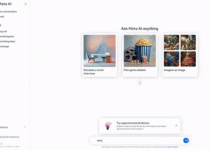How to set up a succeful Google Ads campaign for beginners
With millions of users actively searching on Google every day, advertising on this platform allows you to reach your target audience effectively. Let’s dive into the steps to create a winning Google Ads campaign tailored specifically for selling glasses in the UK.
Introduction
Google Ads, formerly known as Google AdWords, is an online advertising platform developed by Google. It enables businesses to display their ads on Google’s search engine results pages (SERPs), websites, YouTube, and other platforms within the Google Display Network.
Understanding Google Ads
.1 What are Google Ads?
Google Ads works on a pay-per-click (PPC) model, where advertisers bid on keywords relevant to their target audience. When users search for these keywords, Google displays the advertiser’s ad at the top or bottom of the search results page.
.2 Benefits of Google Ads
– Immediate Visibility: Ads appear instantly on Google search results, giving your business immediate exposure.
– Targeted Advertising: You can target specific keywords, demographics, locations, and interests to reach potential customers.
– Measurable Results: Google Ads provides detailed analytics, allowing you to track the performance of your campaigns in real-time.
Setting Up Your Google Ads Campaign
1️⃣ Define Your Goals1️7️⃣
Identify your objectives, whether it’s increasing website traffic, generating leads, or driving sales for your glasses business.
2️⃣ Targeting the uk Market
Set your campaign to target users specifically located in the UK to ensure your ads are seen by potential customers within your target market.
Choose English as the primary language for your ads to effectively communicate with your UK audience.
3️⃣ Conduct Keyword Research
Research relevant keywords related to glasses, eyewear, and your target market in the UK. Use tools like semruch and Google Keyword Planner to discover high-volume, low-competition keywords-
Pic up some good keywords (with high search volume and low comptetion) organize your keywords into relevant ad groups based on themes, such as “designer glasses,” “prescription eyewear,” and “sunglasses.”
4️⃣ choose your biding strategy
Smart Bidding:
- Ideal for: Campaigns where you want customers to take direct actions on your site (e.g., conversions).
- How it works: Smart Bidding uses machine learning to optimize bids based on historical data, user behavior, and contextual signals.
- Strategies within Smart Bidding:
- Target CPA (Cost Per Acquisition): Aims for a specific cost per conversion.
- Target ROAS (Return on Ad Spend): Focuses on maximizing conversion value while maintaining a specific ROAS.
- Maximize Conversions: Automatically sets bids to get the most conversions within your budget.
- Maximize Conversion Value: Prioritizes higher-value conversions.
Cost-Per-Click (CPC) Bidding:
- Ideal for: Generating traffic to your website.
- How it works: You pay for each click on your ad.
- Set a maximum CPC bid, and Google optimizes to get the most clicks within your budget.
Cost-Per-Thousand Viewable Impressions (vCPM) Bidding:
. Ideal for: Increasing brand awareness.
- How it works: You pay for every 1,000 viewable impressions (when your ad is seen by users).
- Effective for display campaigns.
Cost-Per-View (CPV) Bidding:
- Ideal for: Video campaigns.
- How it works: You pay when someone views your video ad (usually for a specified duration).
- Great for YouTube ads.
Manual CPC Bidding:
- Ideal for: Full control over individual keyword bids.
- How it works: You manually set bids for each keyword.
- Requires regular monitoring and adjustments.
Enhanced CPC (eCPC):
- Ideal for: Combining manual bidding with automated adjustments.
- How it works: Google adjusts your manual bids based on the likelihood of conversion.
5️⃣ Targeted audience
A target audience refers to a specific group of people that a business or organization aims to reach with its, you can create your segment’s based on differnet factors such as Age, Gender, Encome and Parental status… Or use google segments
. Affenity segment : groupe of people who show interest on product but they are not ready to buy “ cheap cost”
. In-market segment : groupe of people who are ready to buy product “ high cost “
6️⃣ Create Compelling Ad Copy
Write engaging ad copy that highlights the unique selling points of your glasses, such as style, quality, and affordability. Include a clear call-to-action (CTA) to encourage clicks.
7 Optimizing Your Ads for Conversions
A/B Testing Experiment with different ad variations to identify which ones perform best in terms of clicks, conversions, and ROI.
Monitoring Performance Metrics Regularly review key performance indicators (KPIs) like click-through rate (CTR), conversion rate, and cost-per-acquisition (CPA) to optimize your campaigns for maximum results.


